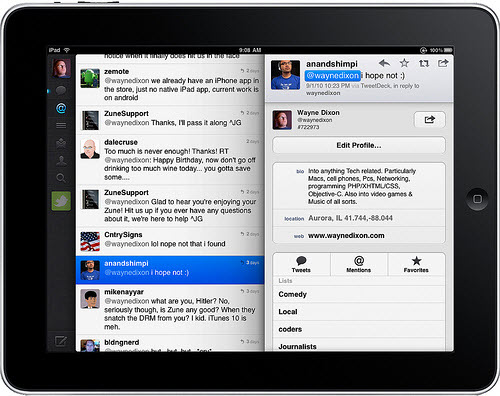Helvetica, the 2009 documentary about the meteoric rise of a Modern minimalist typeface, chronicles the recent history of design theory and describes a continuing clash between hyper-functional Modern design and expressive post-Modern (“grunge”) design. Interestingly, the design trends that characterize the field of typeface design seem to directly parallel the history of Web design.

Today, we take for granted the simple, sleek minimalism that has come to define the Web. It is evidenced in the two-tone, single-logo body of the iPad; the bold, spare, and instantly recognizable typeface of the Facebook “f” logo; or the isomorphic convergence of browsers toward an uncluttered and relatively standardized interface. Of course, various products have strayed from Silicon Valley’s prevailing design standard of Modernist minimalism, but the dominance of this design aesthetic is only further revealed by the ridicule that these companies and products receive.
The dominance of Modernist minimalism on the Web was not always a given. For example, even at its peak popularity, Myspace afforded users a wide range of customizable with respect to this individual profiles. In fact, profiles on Myspace continue to vary so widely that there is hardly any coherence to the site as a whole. But, users seem to enjoy the freedom to customize their own profiles. Beyond the content, the design itself becomes a medium of self-expression. If you are an outward and expressive person, be sure to have music blaring when a visitor lands on the page. If you are the dark and brooding type, exhibit this by selecting font and background colors from the bruise palate. These observations, no doubt, echo the wisdom of Marshall McLuhan, who famously told us that “the medium is the message.”
Of course, the connection between style and personal expression is, by no means, a new phenomenon of the Internet age. The Internet, particularly social media, has merely provided a new set of tools. Yet, among these tools, there exists a tension between utility and expression. Though they love to make stylistic decision regarding their profiles, MySpace users also regularly complain that information is difficult to locate in other users’ profiles that are similarly awash in a sea of customization. Facebook’s minimalism, on the other hand, makes it a far more accessible and efficient site, but at the cost of limiting stylistic expression.
Of course, the utility-expression dichotomy may be overly simplistic. This is precisely the argument made by a neo-Modernist designer in the second clip. He offers a third way – what we might be call “expressive minimalism.” This concept would allows to argue, for example, that contemporary web design is both more expressive and more minimalistic than, say, the average site in the 1990s. That sounds about right.
The Helvetica documentary illustrates that design choices have social, cultural, and individual significance. The importance of design only grows greater as the number of such choices multiplies with the growth of the Web and as various aspects of the Web become more deeply integrated into our lives.
(Related post: Avail the services of website design perth western australia for a professional look and feel of your web page)




Comments 2
cim — January 8, 2011
Part of the reason for minimalism of course is accessibility - users of web pages can be viewing them on phones, on small screens, on braille readers, on widescreen monitors, on projectors, on speech browsers, on touch screens, with or without images, with or without expanded fonts, and so on.
A relatively simple minimalist design has a much better chance of appearing acceptably and usably on the diverse and unpredictable range of browsers and viewing devices out there.
As with architecture, people only appreciate design when it doesn't get in their way. Having to struggle through a twisted concrete forest to get into the building might be bearable for an art installation but would get old really quickly if it was your place of work. On the web "not in the way" really does mean minimalist.